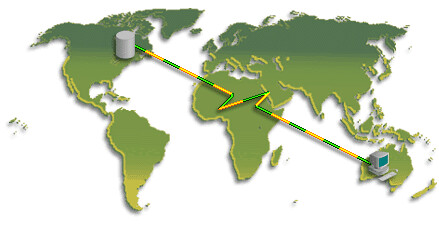Script:
-- NAME: RACDIAG.SQL
-- SYS OR INTERNAL USER, CATPARR.SQL ALREADY RUN, PARALLEL QUERY OPTION ON
-- ------------------------------------------------------------------------
-- AUTHOR:
-- Michael Polaski - Oracle Support Services
-- Copyright 2002, Oracle Corporation
-- ------------------------------------------------------------------------
-- PURPOSE:
-- This script is intended to provide a user friendly guide to troubleshoot
-- RAC hung sessions or slow performance scenerios. The script includes
-- information to gather a variety of important debug information to determine
-- the cause of a RAC session level hang. The script will create a file
-- called racdiag_.out in your local directory while dumping hang analyze
-- dumps in the user_dump_dest(s) and background_dump_dest(s) on all nodes.
--
-- ------------------------------------------------------------------------
-- DISCLAIMER:
-- This script is provided for educational purposes only. It is NOT
-- supported by Oracle World Wide Technical Support.
-- The script has been tested and appears to work as intended.
-- You should always run new scripts on a test instance initially.
-- ------------------------------------------------------------------------
-- Script output is as follows:
set echo off
set feedback off
column timecol new_value timestamp
column spool_extension new_value suffix
select to_char(sysdate,'Mondd_hhmi') timecol,
'.out' spool_extension from sys.dual;
column output new_value dbname
select value || '_' output
from v$parameter where name = 'db_name';
spool racdiag_&&dbname&ÃÂtamp&&suffix
set lines 200
set pagesize 35
set trim on
set trims on
alter session set nls_date_format = 'MON-DD-YYYY HH24:MI:SS';
alter session set timed_statistics = true;
set feedback on
select to_char(sysdate) time from dual;
set numwidth 5
column host_name format a20 tru
select inst_id, instance_name, host_name, version, status, startup_time
from gv$instance
order by inst_id;
set echo on
-- Taking Hang Analyze dumps
-- This may take a little while...
oradebug setmypid
oradebug unlimit
oradebug -g all hanganalyze 3
-- This part may take the longest, you can monitor bdump or udump to see if
-- the file is being generated.
oradebug -g all dump systemstate 267
-- WAITING SESSIONS:
-- The entries that are shown at the top are the sessions that have
-- waited the longest amount of time that are waiting for non-idle wait
-- events (event column). You can research and find out what the wait
-- event indicates (along with its parameters) by checking the Oracle
-- Server Reference Manual or look for any known issues or documentation
-- by searching Metalink for the event name in the search bar. Example
-- (include single quotes): [ 'buffer busy due to global cache' ].
-- Metalink and/or the Server Reference Manual should return some useful
-- information on each type of wait event. The inst_id column shows the
-- instance where the session resides and the SID is the unique identifier
-- for the session (gv$session). The p1, p2, and p3 columns will show
-- event specific information that may be important to debug the problem.
-- To find out what the p1, p2, and p3 indicates see the next section.
-- Items with wait_time of anything other than 0 indicate we do not know
-- how long these sessions have been waiting.
--
set numwidth 10
column state format a7 tru
column event format a25 tru
column last_sql format a40 tru
select sw.inst_id, sw.sid, sw.state, sw.event, sw.seconds_in_wait seconds,
sw.p1, sw.p2, sw.p3, sa.sql_text last_sql
from gv$session_wait sw, gv$session s, gv$sqlarea sa
where sw.event not in
('rdbms ipc message','smon timer','pmon timer',
'SQL*Net message from client','lock manager wait for remote message',
'ges remote message', 'gcs remote message', 'gcs for action', 'client message',
'pipe get', 'null event', 'PX Idle Wait', 'single-task message',
'PX Deq: Execution Msg', 'KXFQ: kxfqdeq - normal deqeue',
'listen endpoint status','slave wait','wakeup time manager')
and sw.seconds_in_wait > 0
and (sw.inst_id = s.inst_id and sw.sid = s.sid)
and (s.inst_id = sa.inst_id and s.sql_address = sa.address)
order by seconds desc;
-- EVENT PARAMETER LOOKUP:
-- This section will give a description of the parameter names of the
-- events seen in the last section. p1test is the parameter value for
-- p1 in the WAITING SESSIONS section while p2text is the parameter
-- value for p3 and p3 text is the parameter value for p3. The
-- parameter values in the first section can be helpful for debugging
-- the wait event.
--
column event format a30 tru
column p1text format a25 tru
column p2text format a25 tru
column p3text format a25 tru
select distinct event, p1text, p2text, p3text
from gv$session_wait sw
where sw.event not in ('rdbms ipc message','smon timer','pmon timer',
'SQL*Net message from client','lock manager wait for remote message',
'ges remote message', 'gcs remote message', 'gcs for action', 'client message',
'pipe get', 'null event', 'PX Idle Wait', 'single-task message',
'PX Deq: Execution Msg', 'KXFQ: kxfqdeq - normal deqeue',
'listen endpoint status','slave wait','wakeup time manager')
and seconds_in_wait > 0
order by event;
-- GES LOCK BLOCKERS:
-- This section will show us any sessions that are holding locks that
-- are blocking other users. The inst_id will show us the instance that
-- the session resides on while the sid will be a unique identifier for
-- the session. The grant_level will show us how the GES lock is granted to
-- the user. The request_level will show us what status we are trying to
-- obtain. The lockstate column will show us what status the lock is in.
-- The last column shows how long this session has been waiting.
--
set numwidth 5
column state format a16 tru;
column event format a30 tru;
select dl.inst_id, s.sid, p.spid, dl.resource_name1,
decode(substr(dl.grant_level,1,8),'KJUSERNL','Null','KJUSERCR','Row-S (SS)',
'KJUSERCW','Row-X (SX)','KJUSERPR','Share','KJUSERPW','S/Row-X (SSX)',
'KJUSEREX','Exclusive',request_level) as grant_level,
decode(substr(dl.request_level,1,8),'KJUSERNL','Null','KJUSERCR','Row-S (SS)',
'KJUSERCW','Row-X (SX)','KJUSERPR','Share','KJUSERPW','S/Row-X (SSX)',
'KJUSEREX','Exclusive',request_level) as request_level,
decode(substr(dl.state,1,8),'KJUSERGR','Granted','KJUSEROP','Opening',
'KJUSERCA','Canceling','KJUSERCV','Converting') as state,
s.sid, sw.event, sw.seconds_in_wait sec
from gv$ges_enqueue dl, gv$process p, gv$session s, gv$session_wait sw
where blocker = 1
and (dl.inst_id = p.inst_id and dl.pid = p.spid)
and (p.inst_id = s.inst_id and p.addr = s.paddr)
and (s.inst_id = sw.inst_id and s.sid = sw.sid)
order by sw.seconds_in_wait desc;
-- GES LOCK WAITERS:
-- This section will show us any sessions that are waiting for locks that
-- are blocked by other users. The inst_id will show us the instance that
-- the session resides on while the sid will be a unique identifier for
-- the session. The grant_level will show us how the GES lock is granted to
-- the user. The request_level will show us what status we are trying to
-- obtain. The lockstate column will show us what status the lock is in.
-- The last column shows how long this session has been waiting.
--
set numwidth 5
column state format a16 tru;
column event format a30 tru;
select dl.inst_id, s.sid, p.spid, dl.resource_name1,
decode(substr(dl.grant_level,1,8),'KJUSERNL','Null','KJUSERCR','Row-S (SS)',
'KJUSERCW','Row-X (SX)','KJUSERPR','Share','KJUSERPW','S/Row-X (SSX)',
'KJUSEREX','Exclusive',request_level) as grant_level,
decode(substr(dl.request_level,1,8),'KJUSERNL','Null','KJUSERCR','Row-S (SS)',
'KJUSERCW','Row-X (SX)','KJUSERPR','Share','KJUSERPW','S/Row-X (SSX)',
'KJUSEREX','Exclusive',request_level) as request_level,
decode(substr(dl.state,1,8),'KJUSERGR','Granted','KJUSEROP','Opening',
'KJUSERCA','Cancelling','KJUSERCV','Converting') as state,
s.sid, sw.event, sw.seconds_in_wait sec
from gv$ges_enqueue dl, gv$process p, gv$session s, gv$session_wait sw
where blocked = 1
and (dl.inst_id = p.inst_id and dl.pid = p.spid)
and (p.inst_id = s.inst_id and p.addr = s.paddr)
and (s.inst_id = sw.inst_id and s.sid = sw.sid)
order by sw.seconds_in_wait desc;
-- LOCAL ENQUEUES:
-- This section will show us if there are any local enqueues. The inst_id will
-- show us the instance that the session resides on while the sid will be a
-- unique identifier for. The addr column will show the lock address. The type
-- will show the lock type. The id1 and id2 columns will show specific
-- parameters for the lock type.
--
set numwidth 12
column event format a12 tru
select l.inst_id, l.sid, l.addr, l.type, l.id1, l.id2,
decode(l.block,0,'blocked',1,'blocking',2,'global') block,
sw.event, sw.seconds_in_wait sec
from gv$lock l, gv$session_wait sw
where (l.sid = sw.sid and l.inst_id = sw.inst_id)
and l.block in (0,1)
order by l.type, l.inst_id, l.sid;
-- LATCH HOLDERS:
-- If there is latch contention or 'latch free' wait events in the WAITING
-- SESSIONS section we will need to find out which proceseses are holding
-- latches. The inst_id will show us the instance that the session resides
-- on while the sid will be a unique identifier for. The username column
-- will show the session's username. The os_user column will show the os
-- user that the user logged in as. The name column will show us the type
-- of latch being waited on. You can search Metalink for the latch name in
-- the search bar. Example (include single quotes):
-- [ 'library cache' latch ]. Metalink should return some useful information
-- on the type of latch.
--
set numwidth 5
select distinct lh.inst_id, s.sid, s.username, p.username os_user, lh.name
from gv$latchholder lh, gv$session s, gv$process p
where (lh.sid = s.sid and lh.inst_id = s.inst_id)
and (s.inst_id = p.inst_id and s.paddr = p.addr)
order by lh.inst_id, s.sid;
-- LATCH STATS:
-- This view will show us latches with less than optimal hit ratios
-- The inst_id will show us the instance for the particular latch. The
-- latch_name column will show us the type of latch. You can search Metalink
-- for the latch name in the search bar. Example (include single quotes):
-- [ 'library cache' latch ]. Metalink should return some useful information
-- on the type of latch. The hit_ratio shows the percentage of time we
-- successfully acquired the latch.
--
column latch_name format a30 tru
select inst_id, name latch_name,
round((gets-misses)/decode(gets,0,1,gets),3) hit_ratio,
round(sleeps/decode(misses,0,1,misses),3) "SLEEPS/MISS"
from gv$latch
where round((gets-misses)/decode(gets,0,1,gets),3) < .99
and gets != 0
order by round((gets-misses)/decode(gets,0,1,gets),3);
-- No Wait Latches:
--
select inst_id, name latch_name,
round((immediate_gets/(immediate_gets+immediate_misses)), 3) hit_ratio,
round(sleeps/decode(immediate_misses,0,1,immediate_misses),3) "SLEEPS/MISS"
from gv$latch
where round((immediate_gets/(immediate_gets+immediate_misses)), 3) < .99 and immediate_gets + immediate_misses > 0
order by round((immediate_gets/(immediate_gets+immediate_misses)), 3);
-- GLOBAL CACHE CR PERFORMANCE
-- This shows the average latency of a consistent block request.
-- AVG CR BLOCK RECEIVE TIME should typically be about 15 milliseconds
-- depending on your system configuration and volume, is the average
-- latency of a consistent-read request round-trip from the requesting
-- instance to the holding instance and back to the requesting instance. If
-- your CPU has limited idle time and your system typically processes
-- long-running queries, then the latency may be higher. However, it is
-- possible to have an average latency of less than one millisecond with
-- User-mode IPC. Latency can be influenced by a high value for the
-- DB_MULTI_BLOCK_READ_COUNT parameter. This is because a requesting process
-- can issue more than one request for a block depending on the setting of
-- this parameter. Correspondingly, the requesting process may wait longer.
-- Also check interconnect badwidth, OS tcp settings, and OS udp settings if
-- AVG CR BLOCK RECEIVE TIME is high.
--
set numwidth 20
column "AVG CR BLOCK RECEIVE TIME (ms)" format 9999999.9
select b1.inst_id, b2.value "GCS CR BLOCKS RECEIVED",
b1.value "GCS CR BLOCK RECEIVE TIME",
((b1.value / b2.value) * 10) "AVG CR BLOCK RECEIVE TIME (ms)"
from gv$sysstat b1, gv$sysstat b2
where b1.name = 'global cache cr block receive time' and
b2.name = 'global cache cr blocks received' and b1.inst_id = b2.inst_id
or b1.name = 'gc cr block receive time' and
b2.name = 'gc cr blocks received' and b1.inst_id = b2.inst_id ;
-- GLOBAL CACHE LOCK PERFORMANCE
-- This shows the average global enqueue get time.
-- Typically AVG GLOBAL LOCK GET TIME should be 20-30 milliseconds. the
-- elapsed time for a get includes the allocation and initialization of a
-- new global enqueue. If the average global enqueue get (global cache
-- get time) or average global enqueue conversion times are excessive,
-- then your system may be experiencing timeouts. See the 'WAITING SESSIONS',
-- 'GES LOCK BLOCKERS', GES LOCK WAITERS', and 'TOP 10 WAIT EVENTS ON SYSTEM'
-- sections if the AVG GLOBAL LOCK GET TIME is high.
--
set numwidth 20
column "AVG GLOBAL LOCK GET TIME (ms)" format 9999999.9
select b1.inst_id, (b1.value + b2.value) "GLOBAL LOCK GETS",
b3.value "GLOBAL LOCK GET TIME",
(b3.value / (b1.value + b2.value) * 10) "AVG GLOBAL LOCK GET TIME (ms)"
from gv$sysstat b1, gv$sysstat b2, gv$sysstat b3
where b1.name = 'global lock sync gets' and
b2.name = 'global lock async gets' and b3.name = 'global lock get time'
and b1.inst_id = b2.inst_id and b2.inst_id = b3.inst_id
or b1.name = 'global enqueue gets sync' and
b2.name = 'global enqueue gets async' and b3.name = 'global enqueue get time'
and b1.inst_id = b2.inst_id and b2.inst_id = b3.inst_id;
-- RESOURCE USAGE
-- This section will show how much of our resources we have used.
--
set numwidth 8
select inst_id, resource_name, current_utilization, max_utilization,
initial_allocation
from gv$resource_limit
where max_utilization > 0
order by inst_id, resource_name;
-- DLM TRAFFIC INFORMATION
-- This section shows how many tickets are available in the DLM. If the
-- TCKT_WAIT columns says "YES" then we have run out of DLM tickets which
-- could cause a DLM hang. Make sure that you also have enough TCKT_AVAIL.
--
set numwidth 5
select * from gv$dlm_traffic_controller
order by TCKT_AVAIL;
-- DLM MISC
--
set numwidth 10
select * from gv$dlm_misc;
-- LOCK CONVERSION DETAIL:
-- This view shows the types of lock conversion being done on each instance.
--
select * from gv$lock_activity;
-- TOP 10 WRITE PINGING/FUSION OBJECTS
-- This view shows the top 10 objects for write pings accross instances.
-- The inst_id column shows the node that the block was pinged on. The name
-- column shows the object name of the offending object. The file# shows the
-- offending file number (gc_files_to_locks). The STATUS column will show the
-- current status of the pinged block. The READ_PINGS will show us read
-- converts and the WRITE_PINGS will show us objects with write converts.
-- Any rows that show up are objects that are concurrently accessed across
-- more than 1 instance.
--
set numwidth 8
column name format a20 tru
column kind format a10 tru
select inst_id, name, kind, file#, status, BLOCKS,
READ_PINGS, WRITE_PINGS
from (select p.inst_id, p.name, p.kind, p.file#, p.status,
count(p.block#) BLOCKS, sum(p.forced_reads) READ_PINGS,
sum(p.forced_writes) WRITE_PINGS
from gv$ping p, gv$datafile df
where p.file# = df.file# (+)
group by p.inst_id, p.name, p.kind, p.file#, p.status
order by sum(p.forced_writes) desc)
where rownum < 11
order by WRITE_PINGS desc;
-- TOP 10 READ PINGING/FUSION OBJECTS
-- This view shows the top 10 objects for read pings. The inst_id column shows
-- the node that the block was pinged on. The name column shows the object
-- name of the offending object. The file# shows the offending file number
-- (gc_files_to_locks). The STATUS column will show the current status of the
-- pinged block. The READ_PINGS will show us read converts and the WRITE_PINGS
-- will show us objects with write converts. Any rows that show up are objects
-- that are concurrently accessed across more than 1 instance.
--
set numwidth 8
column name format a20 tru
column kind format a10 tru
select inst_id, name, kind, file#, status, BLOCKS,
READ_PINGS, WRITE_PINGS
from (select p.inst_id, p.name, p.kind, p.file#, p.status,
count(p.block#) BLOCKS, sum(p.forced_reads) READ_PINGS,
sum(p.forced_writes) WRITE_PINGS
from gv$ping p, gv$datafile df
where p.file# = df.file# (+)
group by p.inst_id, p.name, p.kind, p.file#, p.status
order by sum(p.forced_reads) desc)
where rownum < 11
order by READ_PINGS desc;
-- TOP 10 FALSE PINGING OBJECTS
-- This view shows the top 10 objects for false pings. This can be avoided by
-- better gc_files_to_locks configuration. The inst_id column shows the node
-- that the block was pinged on. The name column shows the object name of the
-- offending object. The file# shows the offending file number
-- (gc_files_to_locks). The STATUS column will show the current status of the
-- pinged block. The READ_PINGS will show us read converts and the WRITE_PINGS
-- will show us objects with write converts. Any rows that show up are objects
-- that are concurrently accessed across more than 1 instance.
--
set numwidth 8
column name format a20 tru
column kind format a10 tru
select inst_id, name, kind, file#, status, BLOCKS,
READ_PINGS, WRITE_PINGS
from (select p.inst_id, p.name, p.kind, p.file#, p.status,
count(p.block#) BLOCKS, sum(p.forced_reads) READ_PINGS,
sum(p.forced_writes) WRITE_PINGS
from gv$false_ping p, gv$datafile df
where p.file# = df.file# (+)
group by p.inst_id, p.name, p.kind, p.file#, p.status
order by sum(p.forced_writes) desc)
where rownum < 11
order by WRITE_PINGS desc;
-- INITIALIZATION PARAMETERS:
-- Non-default init parameters for each node.
--
set numwidth 5
column name format a30 tru
column value format a50 wra
column description format a60 tru
select inst_id, name, value, description
from gv$parameter
where isdefault = 'FALSE'
order by inst_id, name;
-- TOP 10 WAIT EVENTS ON SYSTEM
-- This view will provide a summary of the top wait events in the db.
--
set numwidth 10
column event format a25 tru
select inst_id, event, time_waited, total_waits, total_timeouts
from (select inst_id, event, time_waited, total_waits, total_timeouts
from gv$system_event where event not in ('rdbms ipc message','smon timer',
'pmon timer', 'SQL*Net message from client','lock manager wait for remote message',
'ges remote message', 'gcs remote message', 'gcs for action', 'client message',
'pipe get', 'null event', 'PX Idle Wait', 'single-task message',
'PX Deq: Execution Msg', 'KXFQ: kxfqdeq - normal deqeue',
'listen endpoint status','slave wait','wakeup time manager')
order by time_waited desc)
where rownum < 11 order by time_waited desc; -- SESSION/PROCESS REFERENCE: -- This section is very important for most of the above sections to find out -- which user/os_user/process is identified to which session/process. -- set numwidth 7 column event format a30 tru column program format a25 tru column username format a15 tru select p.inst_id, s.sid, s.serial#, p.pid, p.spid, p.program, s.username, p.username os_user, sw.event, sw.seconds_in_wait sec from gv$process p, gv$session s, gv$session_wait sw where (p.inst_id = s.inst_id and p.addr = s.paddr) and (s.inst_id = sw.inst_id and s.sid = sw.sid) order by p.inst_id, s.sid; -- SYSTEM STATISTICS: -- All System Stats with values of > 0. These can be referenced in the
-- Server Reference Manual
--
set numwidth 5
column name format a60 tru
column value format 9999999999999999999999999
select inst_id, name, value
from gv$sysstat
where value > 0
order by inst_id, name;
-- CURRENT SQL FOR WAITING SESSIONS:
-- Current SQL for any session in the WAITING SESSIONS list
--
set numwidth 5
column sql format a80 wra
select sw.inst_id, sw.sid, sw.seconds_in_wait sec, sa.sql_text sql
from gv$session_wait sw, gv$session s, gv$sqlarea sa
where sw.sid = s.sid (+)
and sw.inst_id = s.inst_id (+)
and s.sql_address = sa.address
and sw.event not in ('rdbms ipc message','smon timer','pmon timer',
'SQL*Net message from client','lock manager wait for remote message',
'ges remote message', 'gcs remote message', 'gcs for action', 'client message',
'pipe get', 'null event', 'PX Idle Wait', 'single-task message',
'PX Deq: Execution Msg', 'KXFQ: kxfqdeq - normal deqeue',
'listen endpoint status','slave wait','wakeup time manager')
and sw.seconds_in_wait > 0
order by sw.seconds_in_wait desc;
-- Taking Hang Analyze dumps
-- This may take a little while...
oradebug setmypid
oradebug unlimit
oradebug -g all hanganalyze 3
-- This part may take the longest, you can monitor bdump or udump to see
-- if the file is being generated.
oradebug -g all dump systemstate 267
set echo off
select to_char(sysdate) time from dual;
spool off
-- ---------------------------------------------------------------------------
Prompt;
Prompt racdiag output files have been written to:;
Prompt;
host pwd
Prompt alert log and trace files are located in:;
column host_name format a12 tru
column name format a20 tru
column value format a60 tru
select distinct i.host_name, p.name, p.value
from gv$instance i, gv$parameter p
where p.inst_id = i.inst_id (+)
and p.name like '%_dump_dest'
and p.name != 'core_dump_dest';
Sample Output:
TIME
--------------------
AUG-11-2001 12:06:36
1 row selected.
INST_ID INSTANCE_NAME HOST_NAME VERSION STATUS STARTUP_TIME
------- ---------------- -------------------- -------------- ------- ------------
1 V9201 opcbsol1 9.2.0.1.0 OPEN AUG-01-2002
2 V9202 opcbsol2 9.2.0.1.0 OPEN JUL-09-2002
2 rows selected.
SQL>
SQL> -- Taking Hanganalyze Dumps
SQL> -- This may take a little while...
SQL> oradebug setmypid
Statement processed.
SQL> oradebug unlimit
Statement processed.
SQL> oradebug setinst all
Statement processed.
SQL> oradebug -g def hanganalyze 3
Hang Analysis in /u02/32bit/app/oracle/admin/V9232/bdump/v92321_diag_29495.trc
SQL>
SQL> -- WAITING SESSIONS:
SQL> -- The entries that are shown at the top are the sessions that have
SQL> -- waited the longest amount of time that are waiting for non-idle wait
SQL> -- events (event column). You can research and find out what the wait
SQL> -- event indicates (along with its parameters) by checking the Oracle
SQL> -- Server Reference Manual or look for any known issues or documentation
SQL> -- by searching Metalink for the event name in the search bar. Example
SQL> -- (include single quotes): [ 'buffer busy due to global cache' ].
SQL> -- Metalink and/or the Server Reference Manual should return some useful
SQL> -- information on each type of wait event. The inst_id column shows the
SQL> -- instance where the session resides and the SID is the unique identifier
SQL> -- for the session (gv$session). The p1, p2, and p3 columns will show
SQL> -- event specific information that may be important to debug the problem.
SQL> -- To find out what the p1, p2, and p3 indicates see the next section.
SQL> -- Items with wait_time of anything other than 0 indicate we do not know
SQL> -- how long these sessions have been waiting.
SQL> --











